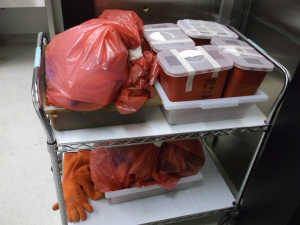Autoclaves
- Pest Management
- Fire Plan Review and Inspection
- Building Codes Enforcement
- ADA Assessment
- Applicable Building Codes
- Building Emergency Coordinators
- Certificate of Completion or Occupancy
- Chartfield Form Codes Permits
- Inspections
- Permit Application Process
- PERMIT APPLICATIONS AND FORMS
- Permit Fee Schedule
- Permit Instructions
- Plan Submittal Guidelines
- Temporary Structures on Campus – Including Tents
- Insurance and Risk Management
- Occupational Medicine
- Industrial Hygiene & Occupational Safety
- Ergonomics
- Camps
- Drones/UAS
- Building and Contents
- Boating & Dive Safety
- Automobile
- Report Lab Closeout
- Radiation Safety
- Hazardous Waste Management
- Chemical and Lab Safety
- Standard Operating Procedures
- Safety Surveys
- Peroxide Forming Compounds
- New Labs, Moving Labs & Closeouts
- Nanoparticles
- Minors and Visitors in the Lab
- Lessons Learned
- Lab Ventilation
- Lab Signage
- Lab Safety Manual
- Hydrofluoric Acid
- Greenhouse Safety
- First Aid Kit Info
- Equipment Purchase Approval
- Equipment Decontamination
- DEA – Controlled Substances
- DBPR – Pharmaceutical Products
- Cryogens
- Compressed Gas
- Chemical Storage and Management
- Chemical Spills
- Chemical Safety Information
- Chemical Inventory
- Chemical Hygiene Plan
- Chemical Exposures
- Acids That Deserve Special Attention
- Biological Safety
- Vaccination Policy for Research Personnel
- Shipping and Transport of Biological Materials
- Select Agents
- Research Involving Flying Insects
- Recombinant & Synthetic Nucleic Acids
- Plant Research
- NIH Guidelines Flowchart
- BloodBorne Pathogen Program
- Biohazardous Waste Disposal
- Biohazard Project Registration
- Autoclaves
- Acute Biological Toxins
- Lab Safety & Research Services
- Clinic Safety
- Chemical Safety
- Animal Research Safety
Laboratory personnel must be aware of the potential for burns while handling hot sterilized items and use caution when removing them from autoclaves/sterilizers.
DOs
- Have a cart available to transport items to/from autoclave.
- Wear a lab coat and always use heat-resistant gloves to load/unload an autoclave.Gauntlets provide wrist and forearm protection for handling hot items.
- Ensure that the autoclave/sterilizer door is closed and locked prior to starting a cycle.
- Do not remove items from an autoclave until they have cooled.
- Use forceps or other tools to remove sharp instruments or broken glass from pans and autoclaves.
DON’Ts
- Do not leave biohazardous waste unattended. If the sterilizer is in use, please return the biohazardous waste to your laboratory.
- DO NOT change autoclave temperature to >250ºF.
- DO NOT shut off the autoclave at the end of your cycle.
- DO NOT adjust water/steam settings or valves.
- DO NOT autoclave liquids containing bleach, formalin, or glutaraldehyde.
- Do NOT autoclave flammable or volatile liquids.
- Do NOT autoclave radioactive materials.
- Do NOT autoclave items containing corrosives (acids, bases, or phenol).
- Do NOT OPEN the chamber door if water leaks from front of the autoclave. clogged lines, equipment malfunction or a failure in the steam supply may cause the autoclave chamber to fill with scalding water Failure to heed this warning may result in second- or third-degree burns from scalding water!



